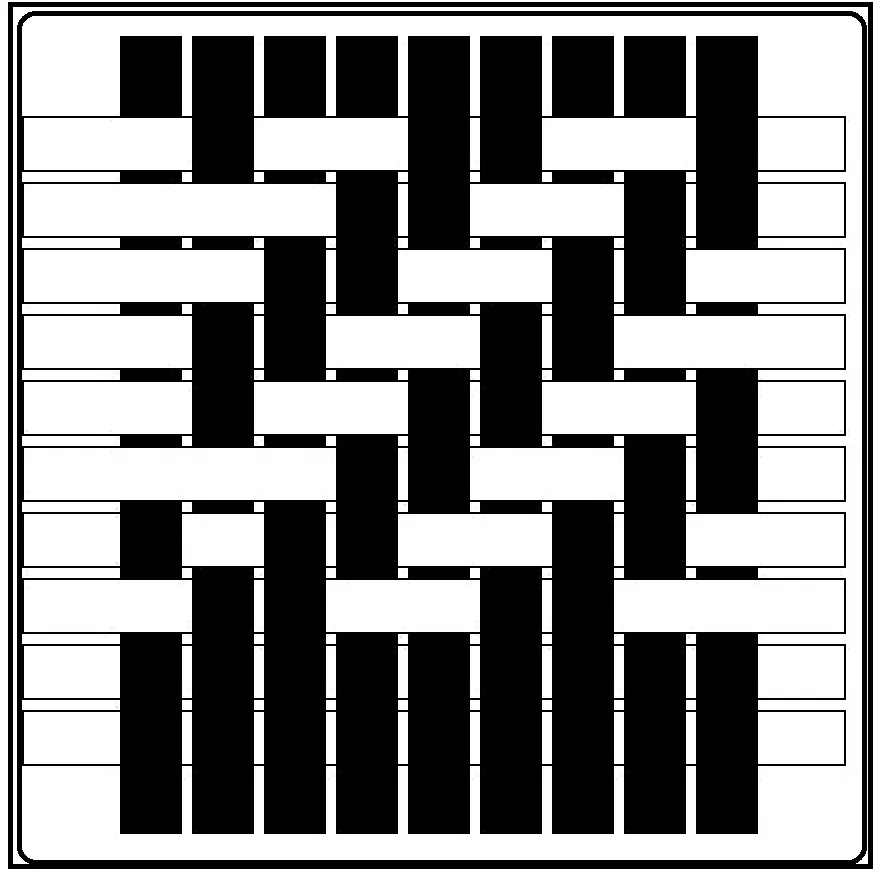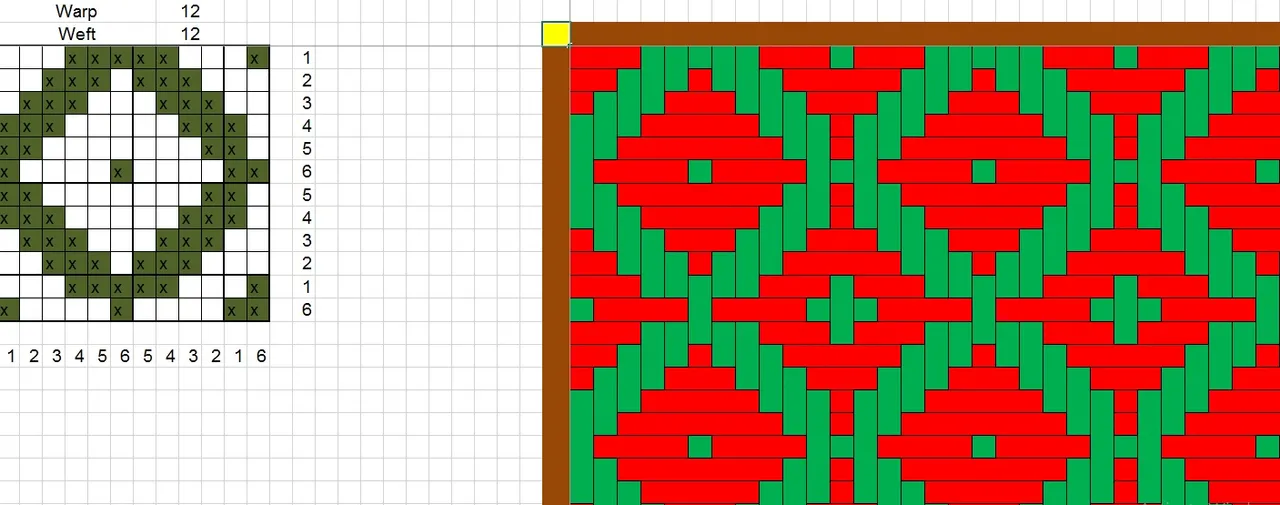Woven Fabric Design
In Textile fabric production, there are at least 4 types of fabric making techniques and thus fabric is classified into four categories. These are-
- Knitting
- Weaving
- Braiding
- Non woven
Out of four, first three are related to needle work. Similar to knitting, weaving needs some ups and down movement of yarn to produce different looking design. In that case loom is used to interlace the vertical (warp thread) and horizontal (weft thread) at right angle. But when it is done at home by needle to achive design by interlacement, there need to follow some formula. Most of the cases rural women do this from experience here in Bangladesh. But if they would follow the rules of design, then they could make it more easily and variations could be achived easily as well. So, Today i shall show Diamond design today in step by step guidelines. Hopefully, it will be interesting learning post for the diamond design producers.
Some Basic Information
Fabric produced by weaving weather in hand loom, power loom, modern loom or by needle is the interlacement of two sets of yarns. By changing the variation, a variety of design can be achieved in a fabric.
This variation is called the Woven fabric structure and fabric design. A woven cloth is formed by the interlacement of two sets of threads, namely, warp and weft threads. Warp yarns (vertical or parallel to the width of fabric) basically the yarns along the length of the fabric and weft yarns (horizontal yarns which are perpendicular to the fabric side) means the yarns along the width of fabric.

In the figure above and all in this post, Bold Black or Cross sign in the cell indicates the warp yarn is up above the weft yarn and Blank cell indicates the weft yarn is up above the warp yarns. This is the general information (basic) you need to know first.
Now lets move on to the Diamond design
Diamond Design
As the name is diamond its basically looks exactly like a diamond. We know how diamond looks like. So, we need to achive the diamond shape by interlacing of warp and weft thread. It can be achieved anywhere you are going to draw this pattern beyond woven fabric also.
Some Example of Diamond First
See some example of Diamond design first-

Steps to Follow
Step 01
The design needs to be drawn in a point paper or graph paper first, then move to the incorporation into fabric. Here i am showing in a spreadsheet to make it clear to you that how it exactly looks like. In my excel sheet, i shall draw a reapeat, and finally in the right side you can check how it looks like in fabric.

You can see here, i have taken 10 cell for warp and 10 cells for weft. And divided these into four equal parts.
Step 02
Out of this the four cells, i have drawn twill design (2/3). Twill design is the design which produces diagonal line. Here 2 is up and 3 is down.
(Note: This is the variation you can do, if you know the rules. Like you can use here 4/1, 3/2, 1/4 also)

In right hand side, you can see how it will looks like. (green is warp thread and red is weft thread)
Step 03
This the crucial steps. You must concentrate and be careful at this step. Figure below you can see the numbering at the bottom of the design.

1, 2, 3, 4, 5, 4, 3, 2, 1, 5. It means 1-5 frist, then exclude the highest one (5), then reverse the numbers (4-1) then place the highest one (5) at last. This is the rule for all diamond design.
For example, for 12 warp and 12 weft desing, the numbering should be like 1, 2, 3, 4, 5, 6, 5, 4, 3, 2, 1, 6.
Now just copy paste. I have copied 1 in 1, 2 into 2 accordingly. Here i have shown copying of 5 number yellow colour and 1 & 5 by arrow colour. Right hand side is showing how the design will looks like at this stage. Hope you have understand. If not, can comment below in the post.
Step 04
See the same numbering at the right side. That is 1, 2, 3, 4, 5, 4, 3, 2, 1, 5 top to bottom. Now just copy paste of first five into rest five according to number same as previous step.

Here, i have shown beside the design, how i have copied 4th number into the next 4.
Now you can see the magic done. The Diamond Design Right side is showing how the fabric will look like.
Lets see some examples

Figure: Diamond Design shown in the example above

Figure: This Diamond Design is construed based on 2/2 twill (that means 8 warp and 8 weft)

Figure: This Diamond Design is construed based on 3/3 twill (that means 12 warp and 12 weft)
Hope you have understand it. Now you can prominent several diamond design into your fabrics, quilts, hand fans and many places by following this principle. You can draw hundreds of diamond by changing the number of ups and downs of twill. That't it.
Application of Diamond Design
For longer float diamond design fabrics are not firm enough, this design is normally in hand fans, towels, bed sheets, quilts, sofa covering, curtain, table cloth, decorated and fancy fabrics etc purposes.


Here, you can see my towel and hand fan made by my sister with diamond design. If you still face trouble, then feel free to ask me in comment.
Be creative and make some needle works.

Thanks for stopping by.
You can check some of my previous post’s into this community on Needle Work
02. Hand Fan made with needle and thread by my sister
03. Basics of Knitting : Technical Face and Technical Back
04. Quilt culture in Bangladesh and some quilts for my baby
Thanks to @crosheille for initiating such a good community
Who I am:

Find me on social media
Follow me on DTube
Follow me on Youtube
Follow me on ThreeSpeak
Follow me on Facebook
Follow me on Twitter
Follow me on DTube
Follow me on Youtube
Follow me on ThreeSpeak
Follow me on Facebook
Follow me on Twitter